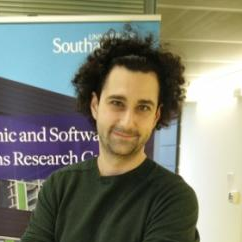Energy Harvesting and Energy-Neutral IoT Devices and Systems
A special issue of Sensors (ISSN 1424-8220). This special issue belongs to the section "Sensor Networks".
Deadline for manuscript submissions: closed (10 December 2019) | Viewed by 24404
Special Issue Editors
Interests: mobile and embedded systems; power/energy management; energy harvesting; energy-driven computing; intermittent computing
Special Issues, Collections and Topics in MDPI journals
Special Issue Information
Dear Colleagues,
The recent momentum of the Internet-of-Things (IoT) is driving the need for embedded devices comprising one or more low-power and resource-constrained computing elements and sensors. Power management of these devices is emerging as a primary challenge for system designers, as they typically have to last for many years without intervention to charge or replace batteries. Energy harvesting (EH) offers the potential for low-power systems to operate without batteries, by generating electrical power from environmental sources. However, energy harvesting sources can be volatile, meaning that a steady power supply cannot be relied upon. For this Special Issue, we welcome high-quality submissions that describe original and unpublished research contributions advancing the frontiers on energy-harvesting IoT devices and systems, with particular emphasis on energy-/power-neutral and intermittent sensing systems.
Dr. Geoff Merrett
Dr. Domenico Balsamo
Guest Editors
Manuscript Submission Information
Manuscripts should be submitted online at www.mdpi.com by registering and logging in to this website. Once you are registered, click here to go to the submission form. Manuscripts can be submitted until the deadline. All submissions that pass pre-check are peer-reviewed. Accepted papers will be published continuously in the journal (as soon as accepted) and will be listed together on the special issue website. Research articles, review articles as well as short communications are invited. For planned papers, a title and short abstract (about 100 words) can be sent to the Editorial Office for announcement on this website.
Submitted manuscripts should not have been published previously, nor be under consideration for publication elsewhere (except conference proceedings papers). All manuscripts are thoroughly refereed through a single-blind peer-review process. A guide for authors and other relevant information for submission of manuscripts is available on the Instructions for Authors page. Sensors is an international peer-reviewed open access semimonthly journal published by MDPI.
Please visit the Instructions for Authors page before submitting a manuscript. The Article Processing Charge (APC) for publication in this open access journal is 2600 CHF (Swiss Francs). Submitted papers should be well formatted and use good English. Authors may use MDPI's English editing service prior to publication or during author revisions.
Keywords
We solicit papers covering (but not limited to) one or more of the following topics:
- Power management concepts, algorithms, and circuits for energy-harvesting sensing systems;
- Architectures and standards for energy-neutral sensing systems;
- Hardware and software concepts for intermittent computing;
- Resource management and operating system support for energy-harvesting sensing systems;
- Communication in intermittent-power domain;
- Ensuring reliable operation in energy-harvesting sensor systems;
- Modeling, simulation, and tools for effective design of future energy-harvesting sensing systems;
- Internet of (battery-less) Things;
- Experience with real-world deployments and innovative applications







